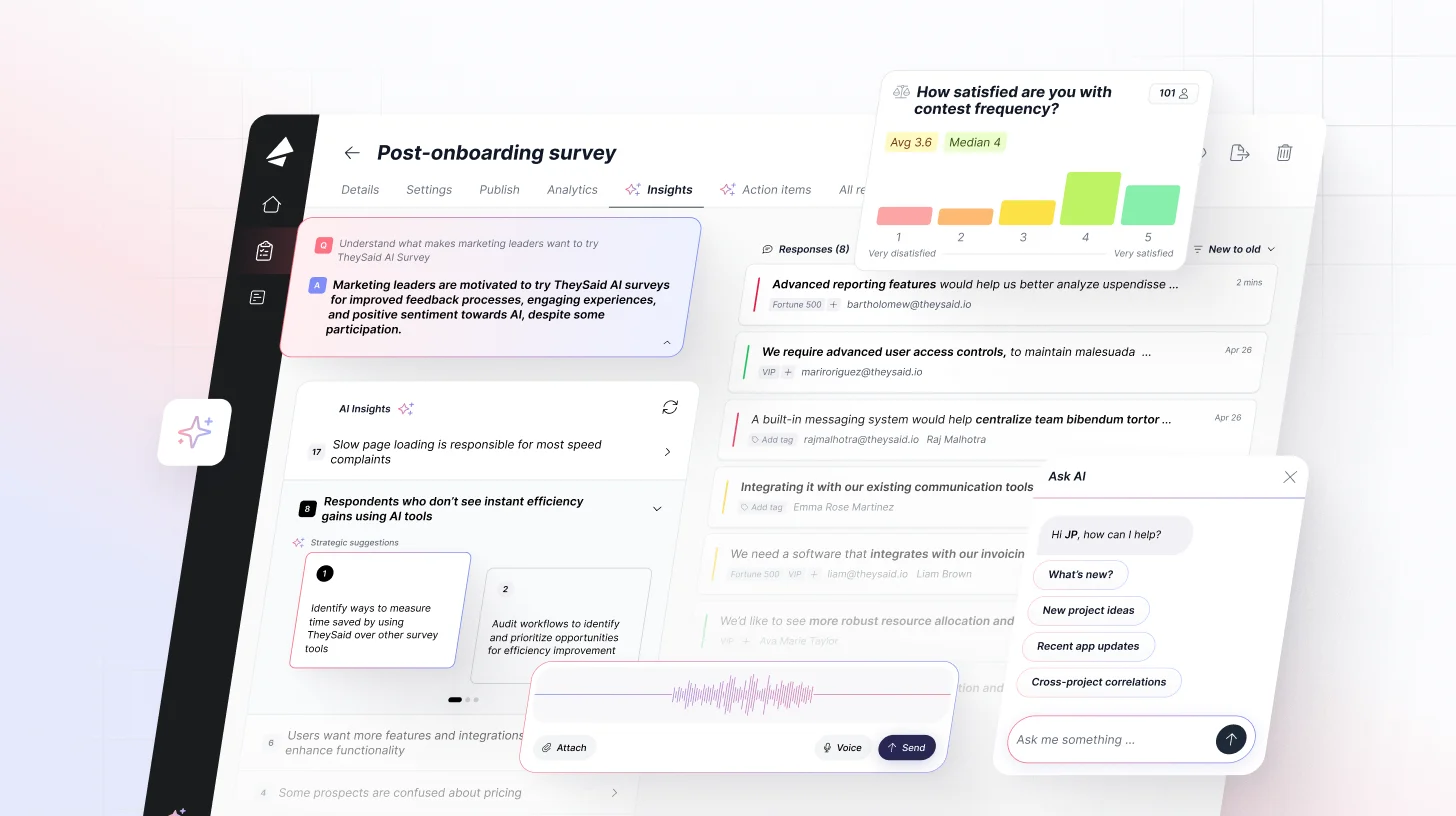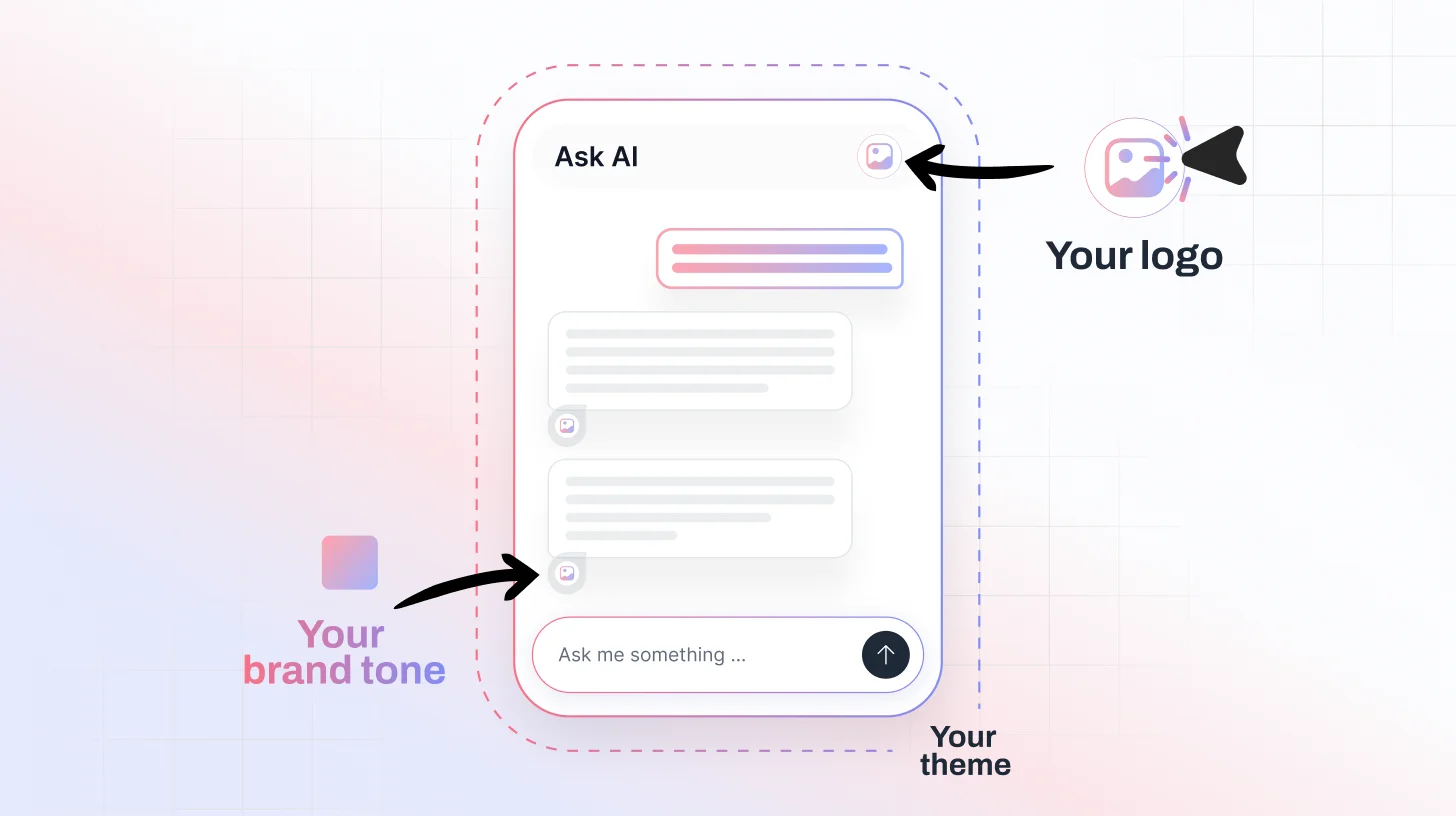 Blog
Blog What Are Workplace Pulse Surveys? Benefits, Uses, and Examples
What Are Workplace Pulse Surveys? Benefits, Uses, and ExamplesWhat Are Workplace Pulse Surveys? Benefits, Uses, and Examples

If you’re not checking in with your employees regularly, it’s easy to miss the small issues that eventually turn into big problems.
That’s where workplace pulse surveys make a difference. These quick, recurring check-ins give organizations a real-time view of employee sentiment, highlight changes before they snowball, and guide leaders toward meaningful action.
Gallup research shows that only 23% of employees worldwide feel engaged at work. Without frequent feedback loops, leaders risk relying on outdated or incomplete data. Regular pulse surveys show employees that their voice matters, build trust, and keep engagement moving in the right direction.
In this guide, we’ll walk through what workplace pulse surveys are, why they matter, and how to use them to create a more connected, engaged, and high-performing workforce.
What Is a Workplace Pulse Survey?
A workplace pulse survey is a short, focused set of questions sent to employees at regular intervals weekly, monthly, or quarterly. The purpose is simple: to continuously gather feedback and measure employee sentiment so organizations can respond quickly, not just once a year.
Unlike traditional employee engagement surveys (annual or bi-annual), pulse surveys are:
- Shorter – usually 5–10 quick questions.
- More frequent – conducted multiple times a year.
- Flexible – designed to measure whatever is most relevant at the time.
They’re part of a broader employee listening program, helping HR and leadership teams stay in tune with how employees actually feel in real time.
How Pulse Surveys Differ from Other Surveys
- Not an engagement survey which takes a deep, once-a-year snapshot.
- Not lifecycle surveys like onboarding, exit, or candidate experience surveys.
- Not ad-hoc surveys designed for one-time, specific issues.
Instead, pulse surveys are regular check-ins that keep a consistent rhythm of feedback flowing across the organization.
Why Workplace Pulse Surveys Work
Because pulse surveys are short and flexible, the topics can evolve. One month, you might measure workload and stress. Next, you might ask about leadership communication or company culture.
Common traits of pulse surveys include:
- Tracking key items over time (e.g., “How likely are you to recommend this company as a great place to work?”)
- Taking less than 5 minutes to complete
- Happening at set intervals (monthly, quarterly, or even weekly)
- Building a continuous feedback loop instead of waiting for annual reviews
In short, pulse surveys act as the heartbeat of your workplace, keeping leaders connected to employee well-being, engagement, and satisfaction.
Read: 70 Workplace Wellness Survey Questions to Boost Employee Well-being
Benefits of Workplace Pulse Surveys
Despite being short and simple, pulse surveys pack a powerful punch. Here’s how they can benefit your organization:
Spot issues before they grow
Pulse surveys give you a real-time window into what employees are experiencing right now, not months later. That means you can catch problems early and act before they escalate.
Measure the impact of change
Rolling out a new policy, leadership change, or big project? Pulse surveys help you see how employees are reacting and whether it’s improving or hurting engagement.
Show employees that their voice matters
Asking for feedback regularly sends a strong signal: “We care about what you think.” This builds trust and makes employees feel heard.
Get real-time feedback
Instead of waiting for the annual survey, pulse surveys keep a constant feedback loop open so you always know the pulse of your workplace.
Stay agile and adaptable
Business moves fast. Pulse surveys make it easier to respond quickly to trends, challenges, or opportunities without waiting for outdated data.
Boost participation rates
Because pulse surveys are short and to the point, employees are more likely to respond. Higher response rates mean better data.
Support continuous improvement
By running surveys regularly, you can track progress over time, adjust strategies, and make steady improvements.
Drive employee engagement
When employees see that their feedback leads to visible change, they’re more likely to stay engaged and motivated.
Common Uses of Workplace Pulse Surveys
Pulse surveys can serve different purposes depending on organizational goals. Here are some of the most common types:
Engagement pulse: A shorter version of the annual engagement survey (2–3 items) that tracks employee engagement levels and the main drivers, such as autonomy, career growth, and alignment with company strategy.
Action planning follow-up pulse: Sent after an annual engagement survey to monitor the progress of action plans, gather structured feedback, and adjust initiatives as needed.
Company values pulse: Measures how well employees feel the organization is living up to its stated values, often used as part of a broader company culture initiative.
Change pulse: Used during organizational transitions (e.g., restructuring, mergers, or policy changes) to check in on employee sentiment and ensure smooth adoption.
Well-being pulse :Focuses on employee workload, stress, and work-life balance, helping organizations prevent burnout and promote wellness.
Manager feedback pulse: Collects input on leadership communication, coaching, and support, giving managers insights into how their teams truly feel.

What Questions to Include in a Workplace Pulse Survey
When it comes to workplace pulse surveys, less is more. The goal is to keep them short, easy to answer, and meaningful enough to spark action. Instead of long forms that no one wants to fill out, think of pulse surveys as quick check-ins like asking your team, “How’s it going today?” but in a structured way.
Here are some smart, people-friendly questions to include:
Employee Engagement Pulse Survey
Employee engagement pulse surveys help you track how motivated, connected, and fulfilled your employees feel at work. They’re shorter than a full engagement survey but still give you the opportunity to ask important questions, such as:
- Do I feel motivated to do my best work every day?
- Do I believe my contributions are recognized and valued?
- Am I proud to work for this organization?
Career Development Pulse Survey
Career development pulse surveys help you uncover whether employees feel supported in their growth and advancement. They also highlight where training or mentorship opportunities may be missing.
Ask important questions, such as:
- Am I satisfied with my current opportunities for professional growth?
- Do I see a clear path for advancement in my organization?
- Does my company provide the training I need to succeed?
Relationships Pulse Survey
Relationships pulse surveys show you how well employees are collaborating and adapting to challenges together. Strong workplace relationships are key to a healthy culture and team performance.
Asks important questions, such as:
- Am I inspired by my colleagues to do great work?
- Do employees support each other when challenges arise?
- Do I feel a sense of belonging within my team?
Work Engagement Pulse Survey
Work engagement pulse surveys measure how connected employees feel to their daily tasks and responsibilities. They help you spot disengagement early and identify ways to re-energize your workforce.
Ask important questions, such as:
- Am I engaged with my work on a daily basis?
- Do I feel satisfied with my current responsibilities?
- Does my work give me a sense of purpose?
Culture Pulse Survey
Culture pulse surveys let you check in on how employees view your company’s values, environment, and overall culture. They help you build a workplace where people feel safe, supported, and aligned with organizational goals.
Asks important questions, such as:
- Do I feel safe and respected at work?
- Am I satisfied with my job security?
- Do I believe the company lives up to its stated values?
Customer Pulse Surveys
Just like employees, customers benefit from regular check-ins too. Customer pulse surveys let you understand satisfaction, loyalty, and areas for improvement quickly.
Net Promoter Score (NPS) Pulse Survey
An NPS survey is one of the simplest ways to track customer loyalty. It asks one key question: “How likely are you to recommend us to a friend or colleague?” on a scale of 0–10.
Our NPS pulse survey template helps you:
- Identify promoters (your biggest fans) and detractors (unhappy customers).
- Track loyalty trends over time.
- Add custom follow-up questions to understand the “why” behind the score.
Quick tip: Keep each survey short (around 5–10 questions) and rotate topics every few weeks. That way, employees won’t feel overwhelmed, and you’ll keep getting fresh, relevant insights.
With TheySaid, pulse surveys feel less like a boring questionnaire and more like a conversation. Our AI-powered surveys and interviews uncover not just what employees think, but why they feel that way, helping you take action that really matters.

How Often Should You Run Workplace Pulse Surveys?
There’s no one-size-fits-all answer, but you can figure out the right cadence by asking two simple questions:
- How often does your business actually need fresh survey results?
- How quickly can your team act on those results?
From there, keep these four factors in mind:
Fluctuations in what you’re measuring
If you’re tracking something that changes quickly, like daily mood or stress levels, you might check in more often (even weekly or daily). But for bigger-picture topics like employee engagement, things don’t shift overnight. In that case, surveying once every few months makes more sense.
How fast can you absorb and act on results?
Employees expect that if they give feedback, leaders will do something with it. Running surveys too often without following up can backfire and damage trust. So before you decide on frequency, ask yourself: “Can we review and respond to the results every time?”
Time to roll out action plans
Not every survey needs a big action step, but you should always leave room to share results and decide on next steps. If you’re checking in too often, you may not have time to follow through before the next survey comes around.
How your business runs its reporting
Some companies plan quarterly, others monthly, and some only report at the annual meeting. Your survey schedule should fit into that rhythm.
- If you only report once a year, an annual engagement survey might be better than frequent pulses.
- If you review progress monthly, you might want to sync surveys with that cycle.
- Many organizations prefer quarterly surveys—it lines up with reporting cycles, leaves enough time for action, and allows you to ask a few more questions without overwhelming employees.
Creating Pulse Surveys with TheySaid
The best part about pulse surveys? They’re quick, flexible, and easy to run with TheySaid. Instead of spending weeks designing traditional surveys, you can launch a pulse survey in minutes and start collecting feedback instantly.
Here’s how it works with TheySaid:
Pick your goal: Are you checking in on employee morale, engagement, or the success of a recent initiative? Define your focus, and TheySaid will guide you with the right question types.
Choose your cadence: Daily, weekly, monthly, or quarterly, it’s up to you. TheySaid helps you align the survey frequency with your business needs so you’re not over- or undersurveying.
Ask the right questions: With AI-powered recommendations, TheySaid suggests short, meaningful questions that avoid survey fatigue and drive actionable insights.
Launch anywhere: Publish your pulse surveys across email, Slack, MS Teams, or even embed them on your intranet. Employees can respond where they’re already working.
Get real-time insights: Instead of waiting for reports, TheySaid’s AI turns responses into clear, actionable insights so you know exactly where to focus.
Close the loop: Share results back with employees and let them see how their feedback shapes action. This builds trust and encourages higher participation in future surveys.
Build smarter workplace surveys with TheySaid.
Key Takeaways
- Workplace surveys give real-time insights into employee sentiment and engagement.
- Pulse surveys are short, frequent, and more effective than annual surveys.
- They help spot issues early, measure change, and build trust with employees.
- The right survey cadence depends on your business’s ability to act on results.
- Tools like TheySaid make it easy to run a smart, actionable pulse survey
FAQs
What is the difference between a pulse survey and an engagement survey?
Pulse surveys are shorter, more frequent, and flexible, while engagement surveys are longer and typically run once or twice a year. Many companies use both to get a complete view.
How can I create effective workplace Pulse surveys?
Use clear, concise questions, keep surveys short, and always communicate results with employees. Platforms like TheySaid make it easy to design AI-powered surveys and turn feedback into action.
Can workplace surveys be anonymous?
Yes. Many organizations run anonymous surveys to encourage honest feedback and reduce fear of negative consequences.
















.svg)